Growing numbers of Israeli settlers are willing to commit violence against their government. So-called “price tag” attacks – which extract a price for any government effort to limit Jewish settlements on the West Bank – have been on the rise. An increasingly assertive Religious Zionist population facilitates the attacks.
Karin Abraham
In December 2011 Burqa, a Palestinian village on the northern West Bank, came under attack when its mosque was torched and defaced with graffiti. At first glance, it appeared to be yet another act of violence by Jewish settlers in the area. But slogans scrawled on the mosque said Tag mechir (“price tag”) and Mitzpe Yitzhar (the name of a Jewish outpost), signalling the start of something new.
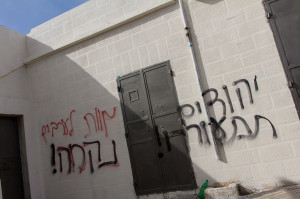
Graffiti on a Palestinian house, 31 January 2014, outside Ma’ale Levona. “Jews Wake Up!” “Death to the Arabs!” “Revenge!” Photo: Oren Rozen, Creative Commons, BY-SA 3.0.
Reported attacks, usually vandalism and small covert assaults, with the Tag mechir or “price tag” signature have risen from six or seven in 2009 to some 100 in 2013. In 2014, such attacks continue to proliferate.
“Price tag” mechanisms
Like most settler violence, extremist “price tag” attacks mainly target Palestinians. The Burqa case, however, appeared to be an act of revenge. The Mitzpe Yitzhar graffiti was in reference to the government-ordered demolition of buildings at that settlement a few weeks earlier. Several “price tag” attacks against Israeli Defense Forces (IDF) and other government institutions make clear the objective of hurting Israeli authorities.
By hitting multiple Palestinian targets, often at the same time, “price tag” attacks appear intended to stretch the capacity of the Israeli Defense Forces. Attackers seem to hope that targeting mosques and churches will trigger retaliation, thus fanning the flames of the ongoing conflict. The original objective by ultra-nationalistic Jews was to raise the “price tag” of any Israeli concessions on Jewish settlements on territories claimed by Palestinians.
Against the State
“The Gaza disengagement in 2005 was highly traumatic for Religious Zionists,” says Mikael Manekin of Molad, the Center for the Renewal of Israeli Democracy, a Jerusalem think tank. High levels of solidarity and loyalty generally characterize Israeli society, but the 2005 unilateral withdrawal from Gaza alienated many settlers. “Some youth refused to enlist for military service. Others started building far-off ‘hilltop’ communities to physically distance themselves from the state,” Manekin explains. “In its furthest extent, the disassociation also encompassed willingness to use violence against the authorities.”
“Price tag” attacks have unleashed intense media debate in Israel on Religious Zionism and anti-government sentiment. Like their Islamist counterparts, Jewish extremists thrive in the era of mass communication, using television and other media to spread their views.
“Price tag” perpetrators can be divided into three categories: A hard-core nucleus of what journalists and security experts say consists of 20 to 30 extremists who are believed to be based in the northern West Bank Israeli settlements of Yitzhar, Elon Moreh and Har Bracha as well as other Palestinian villages in the area. They are suspected in most of the organized attacks. Second is a increasing number of apparent copycat attacks, committed by those who share the “price tag” ideology and are inspired by the news media or Internet sites. Third are are those who copy the “price tag” attacks to attract attention but whose motives are seen as racist or nationalist, rather than the result of strong feelings on the settlement issue.
Condemnation
The State of Israel remains officially committed to religious co-existence and harshly condemns such acts of intolerance. Following the 2011 mosque torching, an Israeli delegation led by President Shimon Peres and including diverse religious leaders visited Burqa to pay their respects to the villagers.
The trend, however is negative. The same mosque was attacked in 2013 in one of about a dozen similar incidents that year, and there has been a significant rise in the number of “price tag” attacks on mosques and churches, including those inside Israel’s 1967-borders.
The rise is due in part to ideologically unrelated copycat attacks. While the “price tag” concept is being diluted, there has been a clear increase in Jewish anti-government sentiment, with estimates of those willing to commit violence ranging from 1,000 to 5,000
A domestic division
“An extremist minority, small in number but not in influence, could bring about a major escalation (in the West Bank) via acts that are dubbed ‘price tag’,” Brig. Gen. Nitzan Alon of the IDF warned in mid-December 2011, after the Burqa attack. A few months later he was appointed head of the defence force’s central command, with overall responsibility for West Bank security.
Israeli leaders, including Justice Minister Tzipi Livni, Public Security Minister Yitzhak Aharonovitch and the heads of Israel’s internal security organization Shin Bet have all been working to marginalize extremist settlers.
Despite a general condemnation of “price tag” violence, some opposition to security measures has arisen, mainly from zealous Religious Zionists. In a Knesset debate in July 2013, Orit Strook, a member of the right-wing Jewish Home party, protested an order by defence officials requiring right-wing activist Boaz Albert to leave the West Bank. Albert had been accused of involvement in price tag attacks, and Strook said the order was an attempt “to silence Albert’s political opinions”.
In January 2012, the Israeli newspaper Haaretz reported that Knesset-member Ze’ev Elkin, of the Likud party, and Housing and Construction Minister Uri Ariel, of Jewish Home, passed information about a planned outpost evacuation to Jewish extremists with possible links to the Yitzhar-based “price tag” nucleus.
Ideological roots
“The mindset behind ‘price tag’ is deeply anchored in Religious Zionism,” says Manekin. Its emergence reflects a recent radicalization among settlers. The history of the foundation and development of the Religious Zionist movement in Israel is the key to understanding it, he says.
Religious Zionism is a relatively new undercurrent within Judaism. Breaking with historically dominant Orthodox Judaism, Abraham Isaac Kook, the first chief rabbi in what was then British Mandate Palestine, developed the new theological interpretation in the early 1920s. A main motivation was to provide legitimacy to immigration to Mandate Palestine amid growing persecution of Jews in Europe, with the objective of creating common ground for religion and the Zionist movement, which was then predominantly secular.
Land theology is the heart of the issue: While Orthodox Judaism held that immigration to a biblically prophesied “Land of Israel” would have to be celestially initiated, Religious Zionism suggested that the re-establishment of a Jewish homeland would hasten the arrival of the Jewish Messiah.
Israeli independence was declared in 1948. For the Religious Zionist movement, however, the 1967 Six Day War became the most important watershed. In those six days of fighting Israel managed to conquer enormous tracts of lands. The land corresponded to territories included in biblical prophecies, leading many to view the conquest as a miracle. Although only 12 to 17 per cent of Jewish Israelis are Religious Zionists, their belief in the imminence of a Messianic era has worked its way into the national ethos.
For the sake of clarity, the ultra-Orthodox never adopted the view that the “worldly” state of Israel was a holy tool for redemption. Nor do the ultra-Orthodox see settlement through a Messianic lens. While some ultra-Orthodox religious accept the Israeli state as a fact, other movements are rabidly anti-Zionist.
Currently, only some 150,000 of the 550,000 settlers are considered Religious Zionists. Although ideological motives may overlap, Religious Zionists tend to prefer smaller settlements deeper in the West Bank to larger settlement blocks close to the 1967-border, where secular and traditional Jews often live.
Operative Messianism
Although various Israeli governments took part in settlement building, Religious Zionists took the lead early. With the toil, dirt and danger of settling in Israel’s new frontline, an identity of “Operative Messianism” developed.
Secular objectives have to some extent merged with Religious Zionist ones over the years. However, while Religious Zionists dream of a religious state based on Halackha (Jewish religious law), the secular view is that settlements are a way to expand the country’s strategic depth.
These two positions are ultimately bound to clash, warned Ehud Sprinzak, an Israeli expert on far-right Jewish groups, in 1986. “Should a real conflict between democracy and Zionism erupt, Zionism takes precedence and extra-legal action becomes legitimate (for Religious Zionists),” he said.
The first real stress test emerged with the 1993 Oslo-accords. Spurred by diplomatic pressure from the international community, and the fear that Palestinians eventually would become a majority in areas under its control, Israel agreed to partly transfer authority of some 19 per cent of the West Bank to the Palestinian authority.
The Gaza disengagement in 2005, prospectively allowing Israel to unburden itself of responsibility for some 2 million Palestinians, followed similar considerations. For Religious Zionists, however, abandonment of Jewish sovereignty in “holy” territory marked a significant and deeply felt step backward.
Tamar Ashraf, a spokesperson at the Mateh Binyamin Regional Council in the central West Bank, says: “The disengagement shook the settler community to its roots. Settlers follow the political leadership of the Yesha Council, an umbrella organization of municipal councils in settlements, but also the spiritual authority of local rabbis, which is often embroiled in political issues.”
“The Yesha Council had to act responsible,” says Ashraf. “When they halted confrontational demonstrations against the evacuations, many suspected they cooperated with the authorities. Several rabbis however remained steadfast and often grandiose in their condemnations of the withdrawal. A shift in influence and authority led to increased radicalization.”
Ideological shift
The internal split is not always easy to spot. Although clad in a headscarf and long skirt, Ashraf regards herself as a moderate settler, and as a Mamlachti, meaning state-oriented. More radical settlers are usually characterized as non-Mamlachti due to their lack of allegiance to the “worldly” state.
The distinction is often vague and hard to quantify. The division, however, reflects a historical and geographic trend in which the most ideological of activists tended to settle in the rougher northern and mountainous part of the West Bank. That is why today’s core of “price tag” extremists are believed to be in the Yitzhar, Elon Moreh and Har Bracha triangle.
Many “price tag” suspects are also linked to the Od Yosef Chai Yeshiva school in Yitzhar. Characterized as “almost non-Zionists,” the learning institution’s rabbis have been involved in several anti-government episodes, such as when Rabbi Yitzhak Shapira in May 2012 urged “fierce defence of hilltops” and claimed the IDF was to blame for “creating an atmosphere of ‘price tag’.”
The ideological split between Orthodox and Religious Zionism in the 1920’s also sheds some light on the radicalism of the school’s rabbis. The school is associated with the Chabbad Lubavich movement, which promotes a ‘land theology’ that is somewhere between ultra-Orthodoxy and mainstream Religious Zionism.
Radicalization in the IDF
Alon, the head of the IDF’s central command, and other Israeli security officials have led a campaign to combat “price tag” attacks. However, Palestinians and international observers often accuse Israeli soldiers of helping extremists, and in several cases soldiers have been accused of taking part in “price tag” attacks, sometimes against their own IDF bases.
Religious Zionists see themselves as “protectors” of the Holy Land, and have taken on an increasingly central role in the IDF since 1980s, often volunteering for West Bank duty. The IDF also has programmes combining army service with religious studies, with 42 approved Hesder yeshiva schools of 100 to 500 students each, making for a significant number of Religious Zionist soldiers.
Following the Gaza disengagement, radicalization also spread to rabbis teaching in IDF programmes. Rabbi Elyakim Levanon, head of the Birkat Yosef Hesder Yeshiva in the settlement of Elon Moreh, for instance, encouraged his followers to block IDF evacuations in the Gaza Strip, and later in the West Bank settlement of Amona. In 2009, the head of the Har Bracha Hesder Yeshiva, Rabbi Eliezer Melamed, issued a religious ruling that urged soldiers to defy military orders to evacuate settlements.
The Har Bracha yeshiva was later excluded from the Hesder program. Its status was reinstated two years later, seemingly with no change in its policies. Some say it sounds like the IDF is trying to play on the religious animosities of its soldiers.
A professor of military sociology at the Open University of Israel, Yagil Levy, suggests a different explanation: “The main focus is to maintain a highly motivated army against its regional enemies. Despite radicalization, if you ask the general chief of staff what is more important – to have a fully operational army to face regional threats or to loose some authority of the West Bank – his preference is clear.”
“Terror” designation
The rise in Jewish anti-state extremism does worry the IDF and others. Following pressure, Public Security Minister Yitzhak Aharonovitch in September 2012 announced the establishment of a new police unit of 80 officers to focus specifically on “price tag” and other nationalistically motivated crime.
In June 2013, “price tag” was placed on Israel’s list as an “illegal” organization. Unlike Palestinians on the West Bank, Jewish extremists there are covered by normal Israeli law, which limits the action that can be taken against them. Declaring “price tag” practitioners an illegal group gives Israel’s security forces more room for surveillance, interrogation and finally prosecution.
Although “price tag” resembles other settler violence, it is actually a symptom of the ideological fault line dividing Religious Zionists from “worldly” Israel. Rumblings can be felt from the mountainous areas of the northern West Bank to the Knesset and to cities inside Israel’s 1967 borders. “Price tag” tensions foreshadow issues Israel will have to deal with should a withdrawal from the West Bank become a reality.

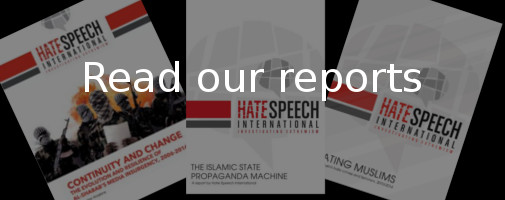
 Print Friendly
Print Friendly




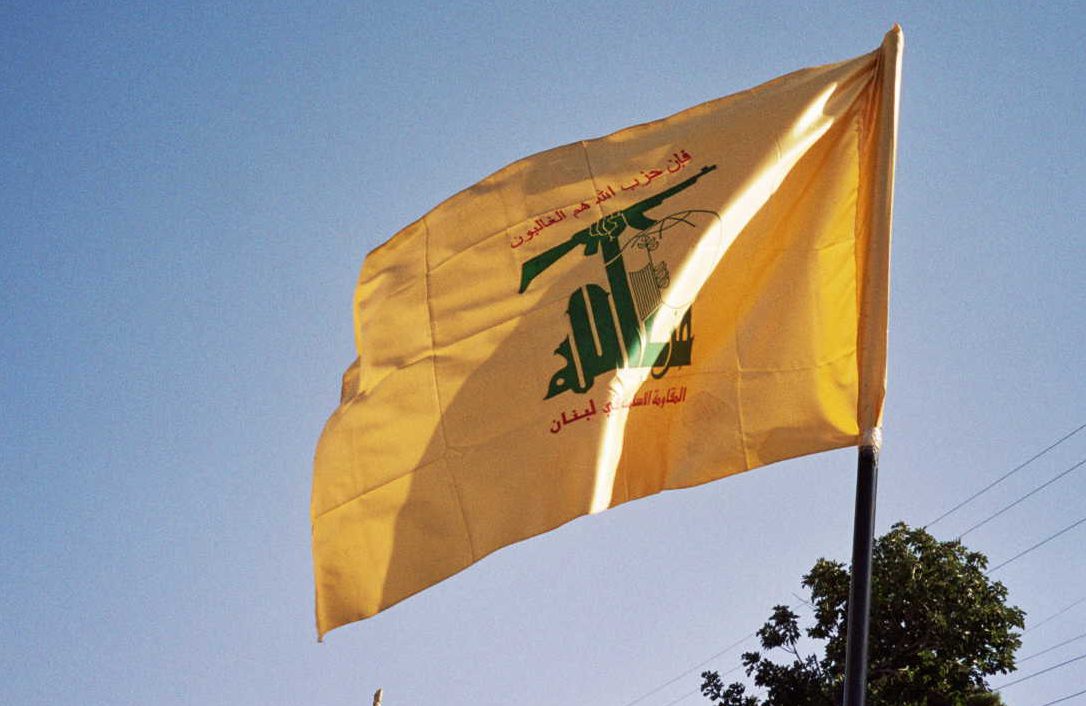
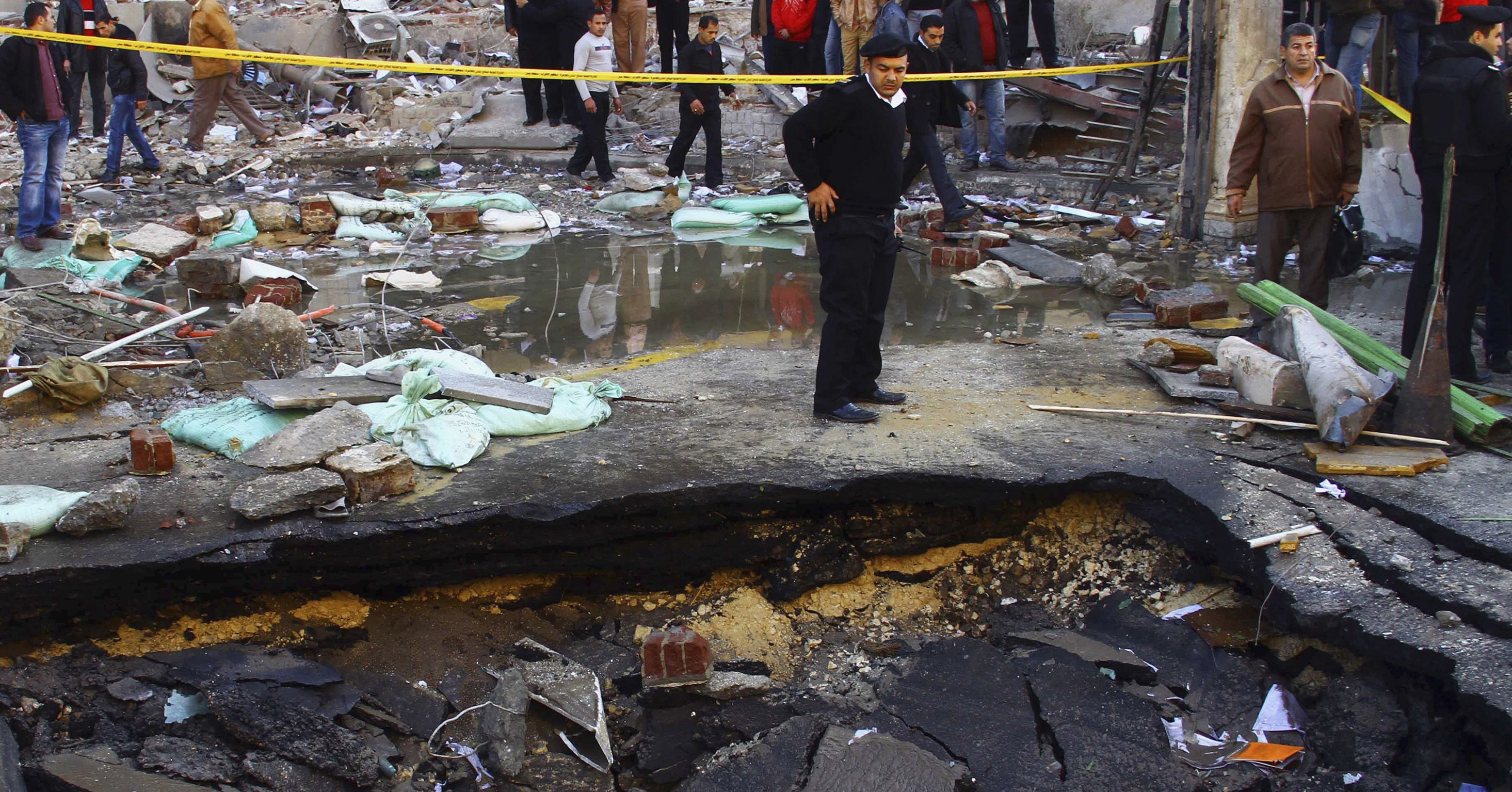
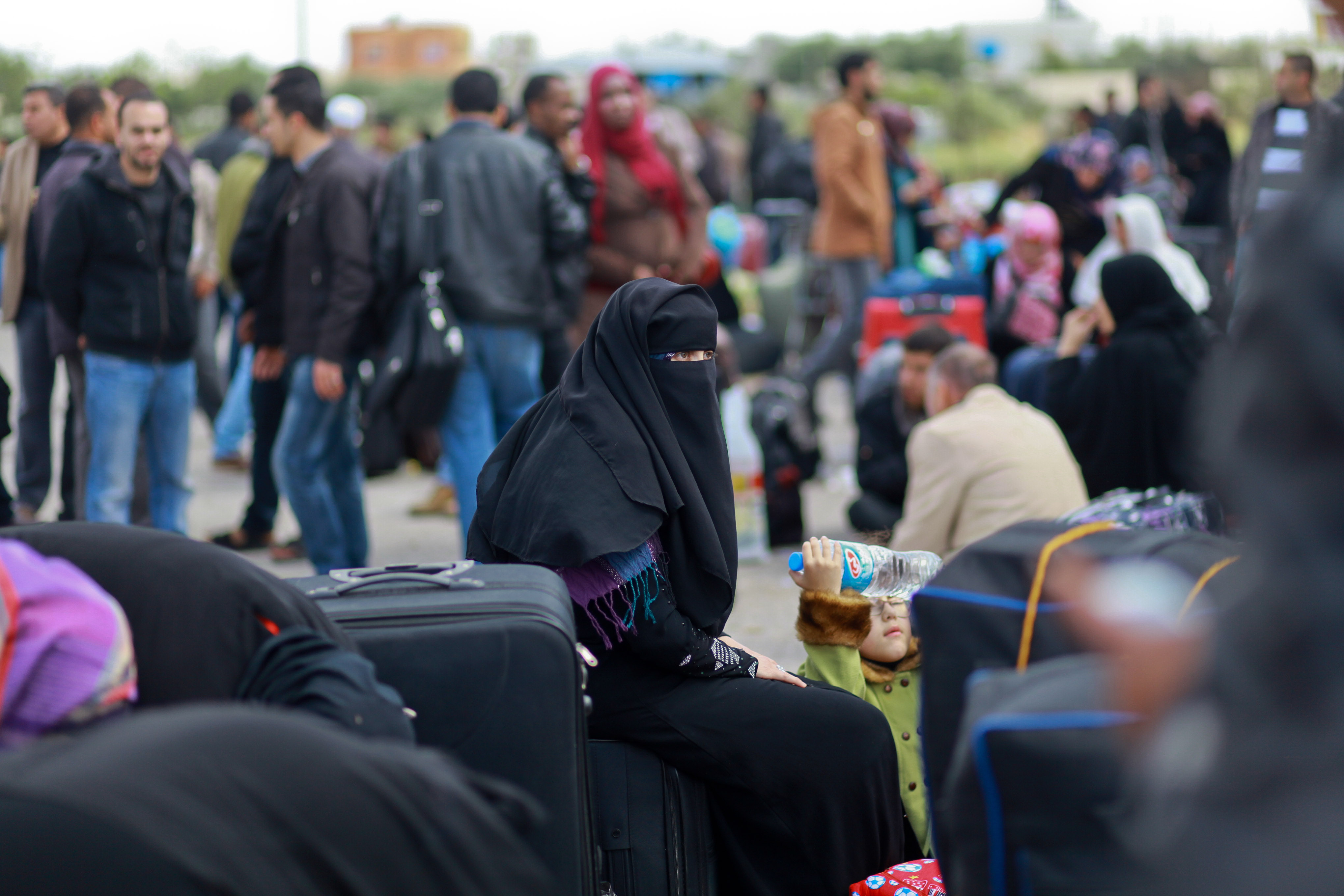
No comments yet.